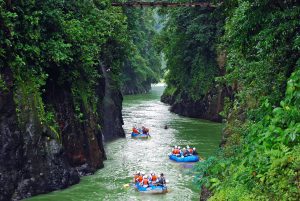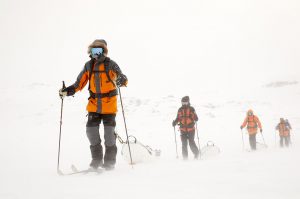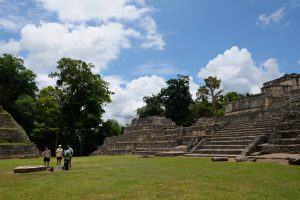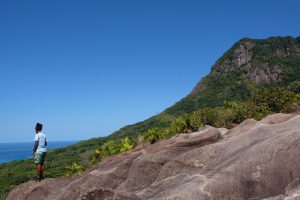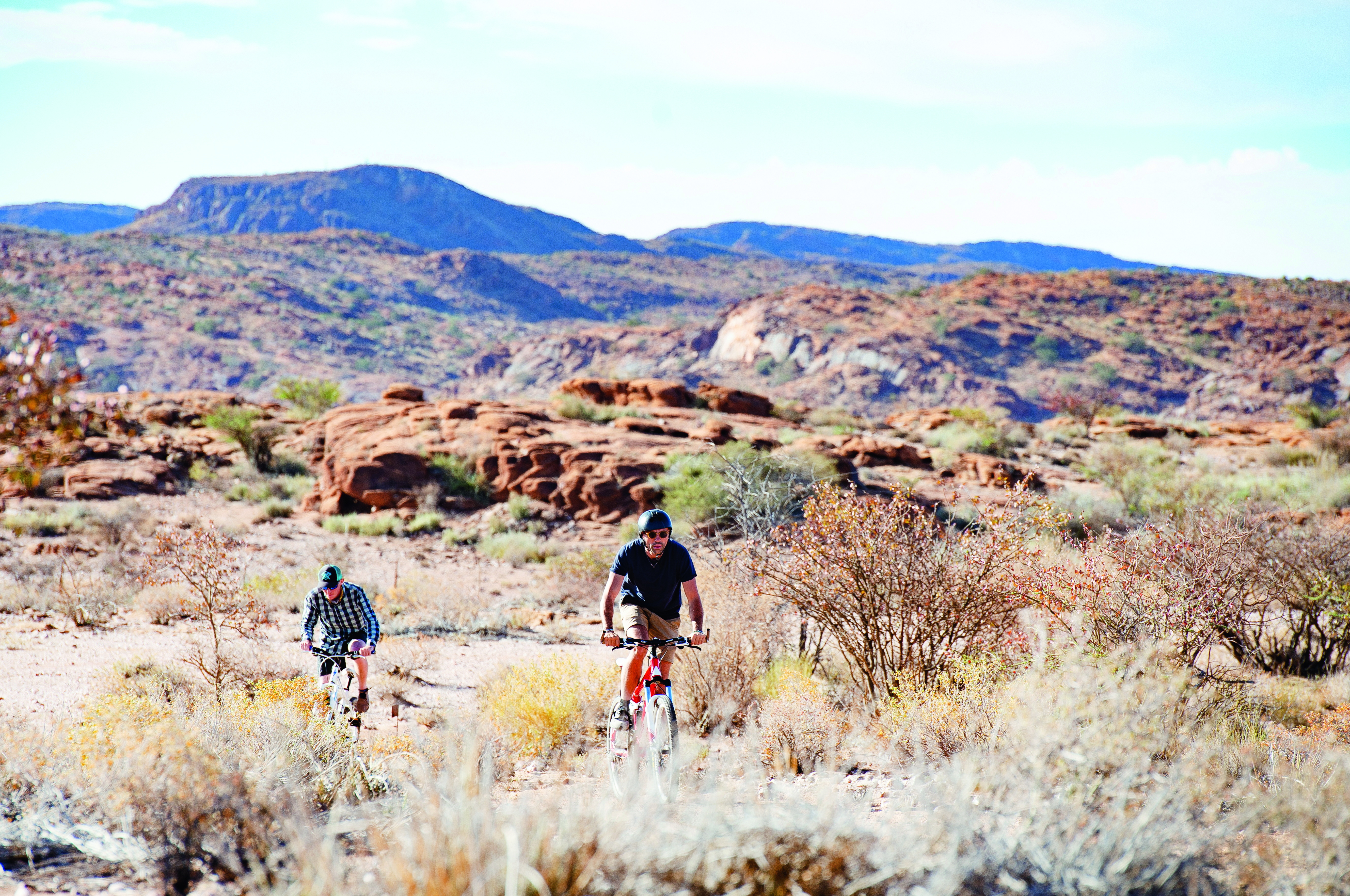
The Green Kalahari in the Northern Cape offers visitors exhilarating adventures set against an otherworldly landscape
Watch the accompanying campaign video here
Within hours of arriving in the frontier lands of the Northern Cape, I’m clambering barefoot towards a river bank to tackle a course of rapids. I’m fast discovering the contradictions, dangers and devastating beauty of this rugged desertscape. “Look where lightning struck that rock, right where you’re walking,” my guide Danie van Zyl says, adjusting the canoe balanced on his head. The boulder under my toes is blackened, scarred and scorched. But it’s not the oddest feature of the terrain. That would be the Orange River: a sparkling blue incongruity amid the red valleys of the Kalahari. Lush grasses and trees sprout on the banks. “Welcome to the Green Kalahari,” Danie says.
Out on the water, as the first set of falls approaches, Danie offers some advice from the rear of the canoe. “A lot of people tend to grab hold of the side and shout like it’s a roller coaster. But you need to keep paddling. The moment you’re the same speed as the current, the water will take you and push you down the shortest route. Although, falling in is part of the experience.” I nervously adjust my grip on my paddle. We head for an opening between the rocks, then the current yanks us downstream. I paddle hard, whooping at the thrill of it all. And then, suddenly, we’re through, mopping our faces as we bob around in a placid eddy. “Onwards?” Danie asks. “Onwards,” I agree, eyeing up the next rapid.
Danie’s passion for adventure goes beyond the outdoors activities he caters for on his 312-acre farm, Khamkirri; it’s a philosophy he and his family live by. “No television. No internet. This is a place where people can reconnect to themselves and nature; where kids can run wild,” he explains back at the camp, as we watch his three young sons fly fishing. “Here you can go hiking, or hit our mountain biking trail. And the Orange River is the holy grail for sport fishing. They call our largemouth yellow fish the fish of a thousand casts. You have to cast at least a thousand times before you get a bite of one of those, and it’s a memorable moment when you do hit one of those big slabs of Orange River Gold.” His youngest reels in a mudfish, unhooks it and holds it up for parental approval. “Great job, Lee!” Danie says.“Now give him a kiss and throw him back!”
In the cool of late afternoon, we head outon an open-top 4×4. The landscape offers up countless curiosities like the jackal food plant — its fruit smelling of rotting flesh, and the quiver tree, whose tubular branches were used by the San bushmen to hold arrows. We spot springbok and rock hyraxes, black eagles and bee-eaters. Danie pulls over and we watch a snake shudder through the scrub. “The Green Kalahari, for me, is about the beauty of the small things,” he says. “Other areas, like Kruger, have their big animals, but we have Augrabies flat lizards, scorpions, birds, ants. And after the rain, we have flowers blooming everywhere. It’s just magic.”
The last surprise of the day lies just over the top of a hill: a coolbox. We fill our glasses and admire the vast landscape of russet escarpments, and the polished glass of the river as the sun sets. I adopt Danie’s philosophy and take a moment to look for the small things, and find the ground is littered with crystals. Rose quartz. Amethyst. Fluorite. I’m incredulous. “Ah yes, the property straddles a few quartz seams,” he explains. We watch the sun drop though the Belt of Venus, a colourful atmospheric phenomenon only visible in a handful of places on Earth. “This place is bigger than the imagination,” Danie sighs. “For me, paradise isn’t overseas. It’s right here.”





